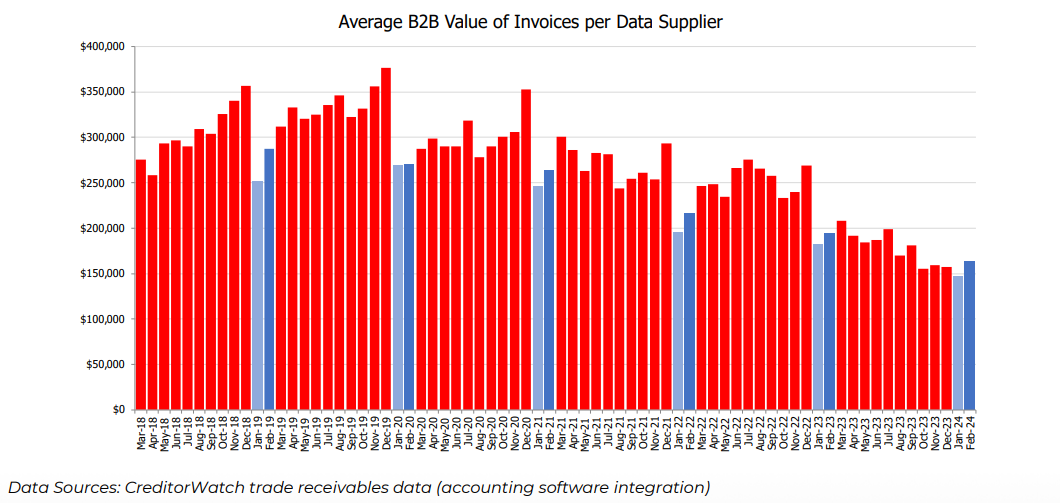

By
Business-to-business (B2B) payment defaults have reached record highs amidst mounting cost pressures, according to a new report from CreditorWatch.
In its latest Business Risk Index (BRI), the credit rating agency found that these defaults have consistently exceeded pre-COVID levels and reached a 47.9% year-on-year increase in February.

At the same time, the average value of invoices remained on a downward trajectory and was 16% below the level observed in 2023.
And despite a seasonal increase of 10.4% in the average invoice value from January to February, the BRI showed that overall trend continued to fall, marking the lowest level since September.

Patrick Coghlan (pictured), CEO of CreditorWatch, said the simultaneous increase in payment defaults and decline in invoice values is worrying.
This trend indicates that “cash reserves are being depleted and margins are being squeezed,” according to Coghlan, as Australian businesses feel the impact of rising interest rates, inflation, wage increases, labour shortages, and diminishing consumer demand due to cost-of-living challenges.
“An increasing number of businesses have less cash coming in, which means they are then finding it more difficult to pay their own suppliers and as such we are seeing a steep increase in payment defaults being registered on the CreditorWatch database,” he said. “They are also cutting the size of their orders and running down inventories.”
The report also highlighted a correlation between payment defaults and the risk of business insolvency.
It found that businesses experiencing one default have a 24% likelihood of becoming insolvent within the following 12 months. This probability escalates to 42% with two defaults and 62% with three defaults.
The report also identified which sectors face the highest risk of business failure. At the top of the list is the beverage services sector, which faces the highest risk of business failure at 7.08%, followed by the public administration and safety (5.39%) and accommodation (5.09%) sectors.
Similarly, CreditorWatch identified several regions within Western Sydney and South-East Queensland as areas with the highest risk of business failure. Merrylands-Guildford in NSW was first in the list, followed by Bringelly-Green Valley and Canterbury in Western Sydney.

CreditorWatch chief economist Anneke Thompson said BRI data has been signalling a deceleration in the economy for some time now and noted that this slowdown has also been seen in the December quarter Australian National Account.
“GDP grew by a very slow 0.2% over the December quarter, taking the annual growth rate to 1.5%,” she said. “However, in per capita terms, GDP has been negative for three straight quarters, which means Australia is in a ‘per capita’ recession. The sustained fall in the average value of invoices over 2023 was a very good leading indicator of the overall slowing of the economy.”
What are your thoughts on this story? Feel free to comment below.
